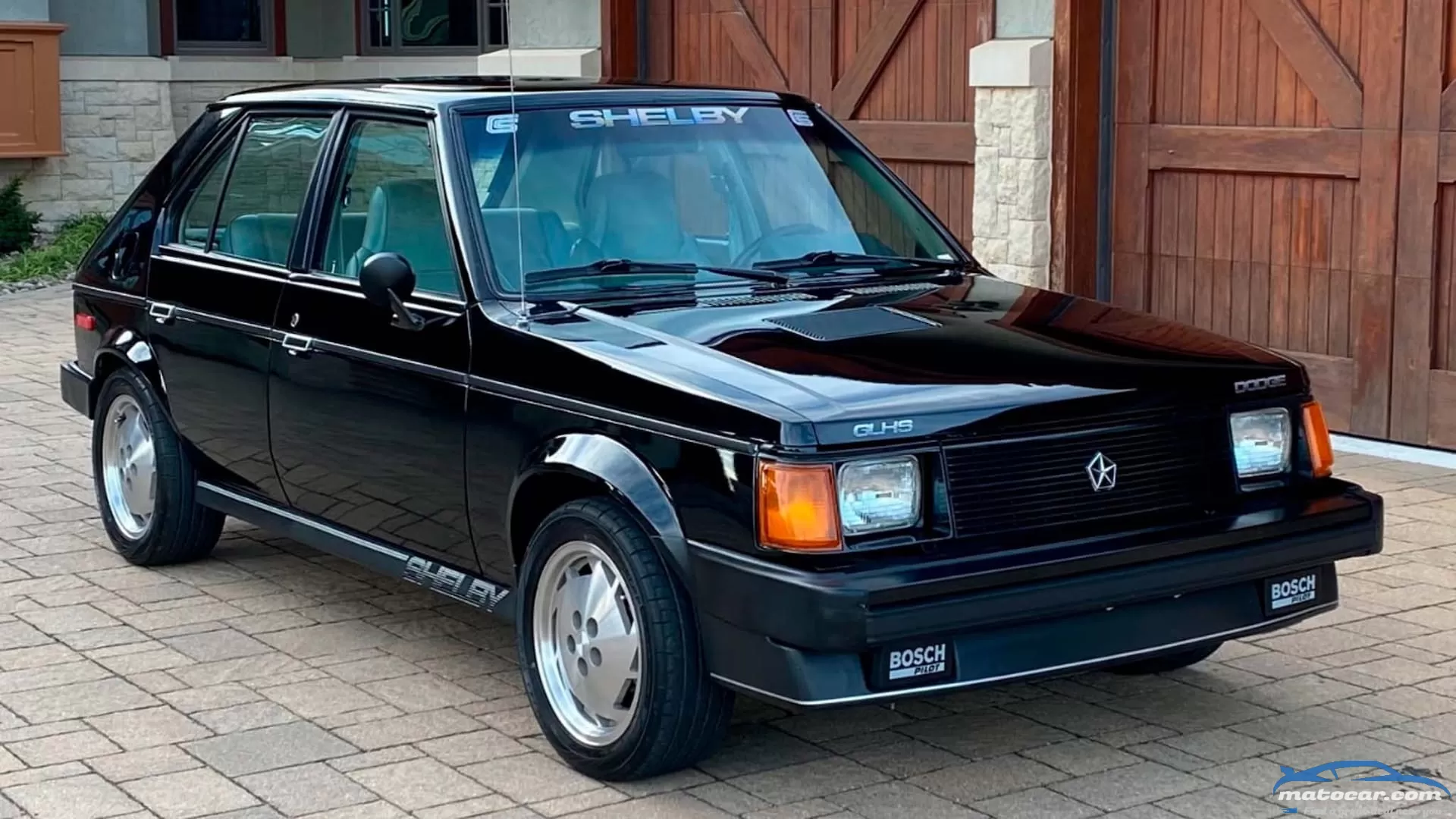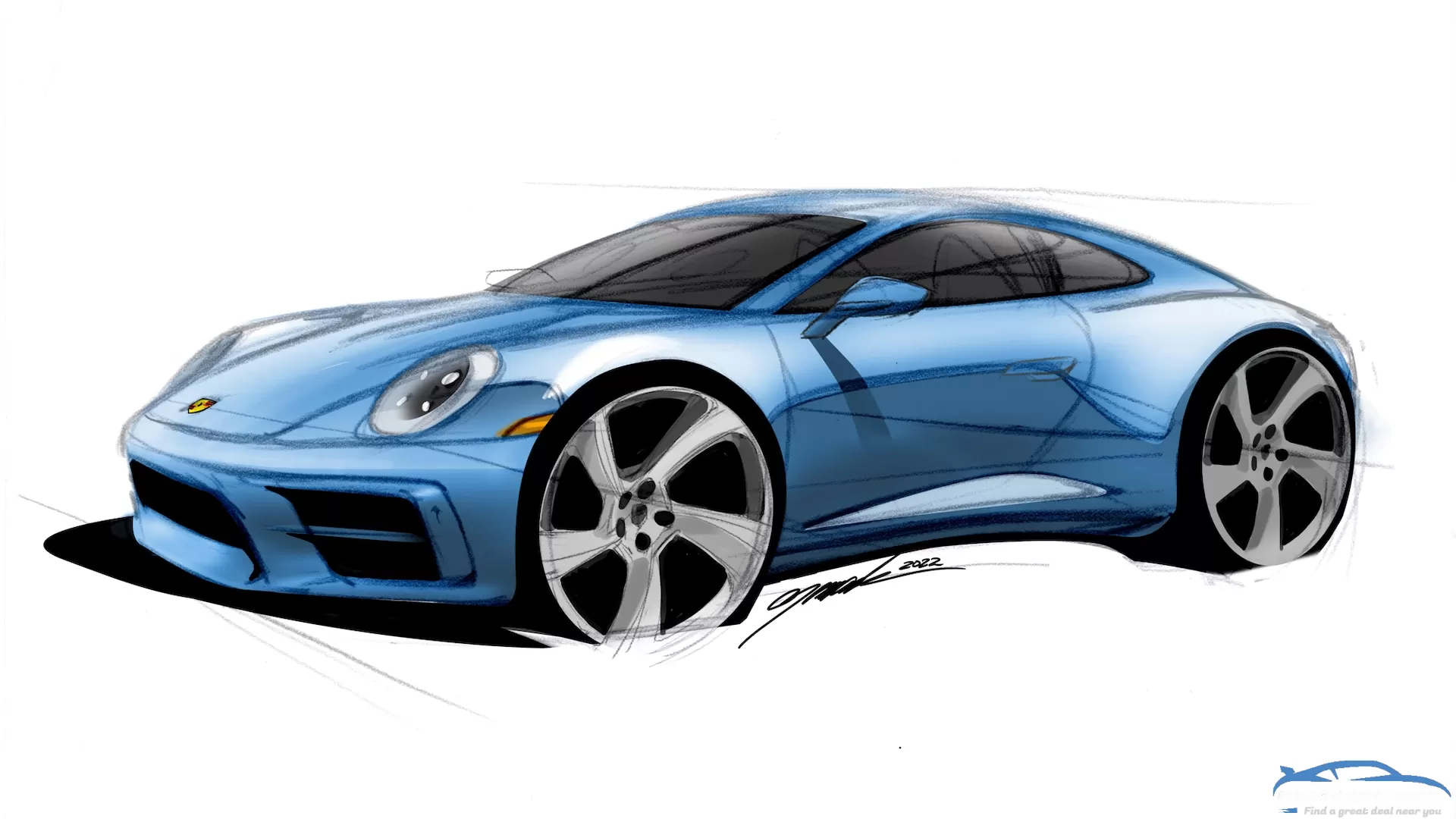What Is a Dodge GLH and Did It Really Go Like Hell?

In the late '70s, the automotive performance world had been decimated by government regulations and soaring gas prices. MPG and going far had replaced having fun and going fast. If you were a hot-rodder, it was a dark time. Things over at the Chrysler Corporation were especially bad and the company was on the verge of going belly-up. Then along came a guy named Lee Iacocca to try and right the floundering ship. Spoiler alert: He pulled off a minor miracle and saved Chrysler.
You may also like
You've seen Volkswagen's ID Buzz electric van, the new-age microbus, haven't you? If not, what are you waiting for? The automaker's iconic bus is back, first as a two-row compact-ish van with a boxy profile and simple, retro-futuristic interior, and later in all likelihood as a three-row, slightly larger variation. Having just debuted for global markets, the ID Buzz is headed to the U.S. sometime next year—which gives VW and longtime brand affiliates time to make a few classic microbus and Vanagon variations happen. We're talking Dokas (the DoppelKabine crew-cab pickups based on T1s and Vanagons), Porsche racing support vans, Westfalia campers, and more. To get you as excited as we are based on nothing but wild speculation, we've whipped up these illustrations of the ID Buzz models we hope to see soon:
volvo c40-recharge Full OverviewProsFabulous design and detailingProvocatively quick accelerationMakes brake pedal almost obsolete ConsSupercar-esque rear visibilitySoftware needs polishingMediocre range and chargingLaunching to 60 mph in 4.2 seconds, the 2022 Volvo C40 Recharge electric SUV vaulted itself into a tie for the title of quickest Volvo ever. And this fastback crossover EV's acceleration never ceases to amuse. It reacts instantly to pressure on the go pedal, angling its grilleless front end slightly skyward as the motors hum happily along.But the C40 Recharge isn't the only electric SUV with sports-car-rivaling speed. The Tesla Model Y outperforms it in each of our testing criteria—and in criteria that matter greatly to everyday living. So why would the C40 Recharge be worth consideration in an expanding field of electric luxury SUVs? Simple: Because it's cool.Volvo's Second Electric SUV (Sort Of)What is the C40, anyway? Begin with the Volvo XC40, which went on sale in the United States for 2019 and quickly climbed to the top of our subcompact luxury SUV rankings. For 2021, Volvo revealed the XC40 Recharge, a battery-powered version of the XC40 and the first of many all-electric vehicles due from the Swedish brand. Then, following fashionable trends, Volvo reworked its conventional SUV to wear a sleek fastback roofline. The result is the C40 Recharge.Fundamentally, the C40 Recharge and XC40 Recharge are the same machine. Both are based on Volvo's CMA architecture and feature a battery pack with 75 kWh of usable capacity beneath the floor. In each, a dual-motor AWD powertrain spins out an impressive 402 hp and 487 lb-ft of torque. Although both recharge at a maximum of 150 kW, the C40 ekes out a slight range advantage, scoring 226 miles instead of 223 in EPA certification. The XC40 Recharge has a lower starting price, at $52,795, but equipping it in high-end Ultimate trim (the only trim offered on the C40 for 2022) brings it to within $600 of the C40. Both are currently eligible for $7,500 in federal tax incentives.Think of it this way: The C40 Recharge is to the XC40 Recharge what the BMW X4 is to the X3 or the Audi E-Tron Sportback is to the E-Tron. However, the XC40 can be had with either gasoline or electric power. The C40 Recharge is exclusively an EV—if you want its good looks, you have to go electric.Statement- (and Sale-) Making StyleIndeed, design is a primary selling point for the C40, and starting with the XC40 could only mean great things for its vogueish adaptation. The sleek greenhouse contrasts against chunky lower body panels, all hunkered down on aero-emphasizing 20-inch wheels. Its unique headlights and taillights perform an LED animation whenever it's locked or unlocked. Aerodynamic elements at the top and bottom of that raked rear glass add a touch of sportiness.Aesthetic allure persists inside the C40, which alters the XC40's attractive and functional cabin with a few key enhancements. That's not leather on the steering wheel or suede on the seats; the C40's materials are entirely animal-free, but they look and feel convincingly upscale. Our test car's cosmopolitan blue carpeting perfectly matched its exterior paint. An especially stylish detail is the trim panels, which are formed to resemble the topography of Sweden's Abisko National Park. At night, backlighting shines through them at varied brightnesses, creating an ambiance quite unlike any other car's.As an artistic exercise, the C40 succeeds, standing out with its sculptural stance and delightful flourishes. Even better, it's really fun to drive.A Very Unassuming DragsterAs stated above, the C40 is rapid. In acceleration testing it's essentially even with XC40 Recharge, hitting 60 mph in 4.2 seconds, 100 mph in 10.6 seconds, and the quarter mile in 12.8 seconds at 109.0 mph. It whooshes from 45 to 65 mph in just 1.9 seconds. These results are shockingly similar to certain V-8-powered muscle cars.Out and about, the C40's driver has a sensation of imperious power that belies the SUV's style-centric image. Its accelerator pedal is ultraprecise, letting you zip ahead instantly with just a few millimeters of foot movement. Some EVs dampen accelerator response for smoothness, but the C40 seemingly doesn't, giving it an extremely linear, almost raw feel. Don't take this to mean that it's difficult to drive the C40 normally, though. Any challenge to that lies with your self-discipline, not the pedal's programming.Accelerator is perhaps a misnomer for the right-side pedal, as it so effectively controls deceleration, too. When one-pedal drive mode is engaged, you can subtract speed with exactitude by relaxing your ankle. Doing so activates the motors' regenerative braking effect, converting kinetic energy into deceleration while sending charge back to the battery. With how intuitive it becomes, and that it can bring the C40 to a complete stop, pushing the brake pedal becomes a rarity. If you do, you'll find it firm and strong. Even so, we recorded a 125-foot stop from 60 mph, longer than the 118-foot distance posted by the XC40 Recharge.Given that both Volvos roll on identical EV-spec Pirelli tires, high track temperatures that test day were a likely culprit in those and other performance discrepancies.The C40 averaged 0.78 g on the skidpad, while the XC40 Recharge held on to 0.84 g. Both went around the figure eight in 26.3 seconds, at 0.72 and 0.70 g average, respectively. On the road, the C40's handling is dialed more toward simplicity than involvement; its steering is light and a bit dull. Despite suspension tuning on the firmer side, it's generally comfortable and retains a solid, planted feel, aided by its low, heavy battery pack.Here's the thing, though: The Tesla Model Y—in many ways, still the EV SUV benchmark—outperforms the C40 across the board. However it's configured, it's quicker to 60, stops shorter, and holds the road better. Comparing their battery capabilities further dims the value of the Volvo.Looks Only Go So FarEven if you have the ability to charge at home, the C40's 226-mile range rating isn't competitive when you consider the Model Y Long Range can cover more than 100 additional miles. Its 150-kW charge rate is slow, too, now that rivals like the Genesis GV60 can absorb electrons at 235 kW. These factors shouldn't deter you entirely, but carefully consider how you'll use this EV. Last year, Volvo was able to boost the XC40 Recharge's range from 208 miles to 223 using only a software update, so it's possible that eventually even more miles could be coded in.Hopefully, other over-the-air updates will address the software bugs we experienced on our C40 test car. At different times, a tire pressure warning wouldn't reset, the backup camera wouldn't come on, and only the rear doors would unlock. There's also the matter of its Google-designed infotainment, which has useful functionality and voice-recognition capabilities but doesn't react as quickly as other automakers' systems or your smartphone.The C40's hardware—that is to say its very shape—creates compromises, too. Maximum cargo capacity is 49.0 cubic feet, down from the XC40 Recharge's 57.5-cubic-foot measurement. Visibility through the raked rear window is more problematic, in that it's terrible. We're surprised that a company as safety-focused as Volvo would sign off on letting its customers drive with such a limited view of what's behind; the C40 is a perfect candidate for a digital rearview mirror. At least the C40's standard blind-spot monitoring works well, as do its other driver assist systems.Too Cool to CareFinite differences in specs or our test data aren't what'll sell a person on the C40. The reason to choose this EV over any other—ones that go farther, carry more, or perform better—is because of the experience it delivers. Unlike some of its competitors, C40 is not a prosaic zero-emissions mobility appliance. With its great looks, funky interior, and frisky road manners, there's no getting bored of the C40. This small electric SUV is too cool for that.Looks good! More details?2022 Volvo C40 Recharge Twin Specifications BASE PRICE $59,845 PRICE AS TESTED $60,540 VEHICLE LAYOUT Front- and rear-motor, AWD, 5-pass, 4-door SUV MOTOR TYPE Permanent-magnet electric POWER (SAE NET) 201 hp (fr), 202 hp (rr); 402 hp (comb) TORQUE (SAE NET) 243 lb-ft (fr), 243 lb-ft (rr); 486 lb-ft (comb) TRANSMISSIONS 1-speed automatic CURB WEIGHT (F/R DIST) 4,742 lb (52/48%) WHEELBASE 106.4 in LENGTH x WIDTH x HEIGHT 174.8 x 73.7 x 62.8 in 0-60 MPH 4.2 sec QUARTER MILE 12.8 sec @ 109.0 mph BRAKING, 60-0 MPH 125 ft LATERAL ACCELERATION 0.78 g (avg) MT FIGURE EIGHT 26.3 sec @ 0.72 g (avg) EPA CITY/HWY/COMB FUEL ECON 94/80/87 mpg-e EPA RANGE, COMB 226 miles ON SALE Now Show All




0 Comments